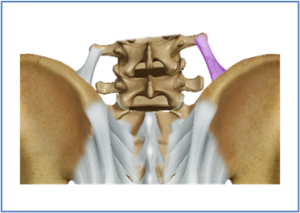by Joe Eudy, President of Impact Safety (www.safeimpact.com) and PIA MidAmerica Safety Specialist
Note: This article is to aid with understanding back issues. It should not be considered as medical advice.
Importance of Protecting Your Back
Did you know that back pain among employees is affecting almost every printing plant in our region? Some companies have expensive Worker Comp cases relating to back injury. Others see back pain impacting productivity and absenteeism on a routine basis.
One in three people report that back pain is impacting their daily life.
Forward-thinking companies in our industry are working to minimize the risk in tasks that traditionally contributed to back stress, and they are training employees on how to “Protect Your Back”.
Preventing back injury requires a safe work environment, training employees on back safety, and it also requires a personal commitment by each person to take appropriate precautions to protect their back throughout each day.
A little exposure to what’s going on in our backs when there is back pain or injury can help motivate us to protect our backs.
Some common issues people experience with discs in the back
When people have back surgery, the doctors are usually trying to intervene and compensate for damage to one or more discs in the back. If workers at your company experience aches and pains in the back some days, it’s likely they are doing things that could lead to disc injuries over time.
Let’s discuss some of the back pain issues people commonly experience (which indicate they are over-stressing their backs).
Muscle Spasms in the back are very common. They are more likely when we ask someone who does not exercise regularly to attempt something they are not accustomed to. They are more common if the person has not warmed-up their body prior to a physical task. (Spasms can also be caused when using force in excessive repetition). Muscle spasm pains normally last only a week or so, assuming you walk regularly and don’t stress the muscles during this healing period.
A strain is where a muscle or tendon is stressed from a pull or twist, and may have some tearing. (Note that tendons attach muscle to bone).
A sprain is where a ligament is over-stretched and may experience some tearing. (Note: Ligaments connect bone to bone).
It’s important to note that both strains and sprains usually heal enough to relieve most of the pain in around three weeks. However, caution and potentially light-duty should be longer because full healing usually takes around five or six weeks. Light activity is way better for healing than bed rest with strains and sprains. (Note: Spasms, strains & sprains may last longer when there are other underlying causes).
Register for this month’s Quick Takes Webinar and learn more about ways to prevent back injury. This webinar is meant for all employees. https://piamidam.org/quick-takes-webinars/

Some issues causing back pain

Spasm in back muscles

Strain in muscles or tendons

